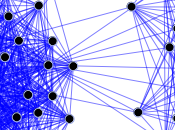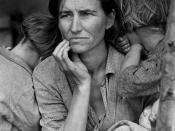What is social class? How, in your opinion and based on the materials, does childhood experience affect the social class of adults? How does social class interact with age, gender and race?
Each society is made up of social layers, usually called social classes, with each layer having a different degree of access to goods or status. In the Western societies, (where I was born) the social class of a given family is most often defined in terms of the income and education of the adults in that family.
In the United States, social classes are made up of three different social classes which are usually identified: middle-class, working-class, and poverty-level families. Members of each of these social layers tend to share certain values or styles of interaction, with the larger differences found between families living in poverty and those in higher social class groups.
For children, like Lafayette and Pharaoh Rivers in the book, "There are No Children Here," who lived in Henry Horner Homes in a public housing complex, which is typical for very poor families. Those children, statistically will follow the same direction that their mother has walked. It is clear and evident from their three oldest siblings. The disadvantages of poverty are enormous with these children, and these disadvantages are not equally distributed across ethnic groups in the U.S.
One of the most important accomplishments of childhood is to form stable, trusting bonds with adults in their environment so that the child can become confident adult. Children's basic survival depends on forming meaningful, effective relationships with other people. Socialization is the lifelong process through which an individual's behavior patterns, values, standards, skills, attitudes, and motives are shaped to conform to those regarded as desirable in a particular society. This process involves...



Nicely written
Great work! from your writing it feels like you have passion for this subject. Keep up the great work!!
0 out of 0 people found this comment useful.